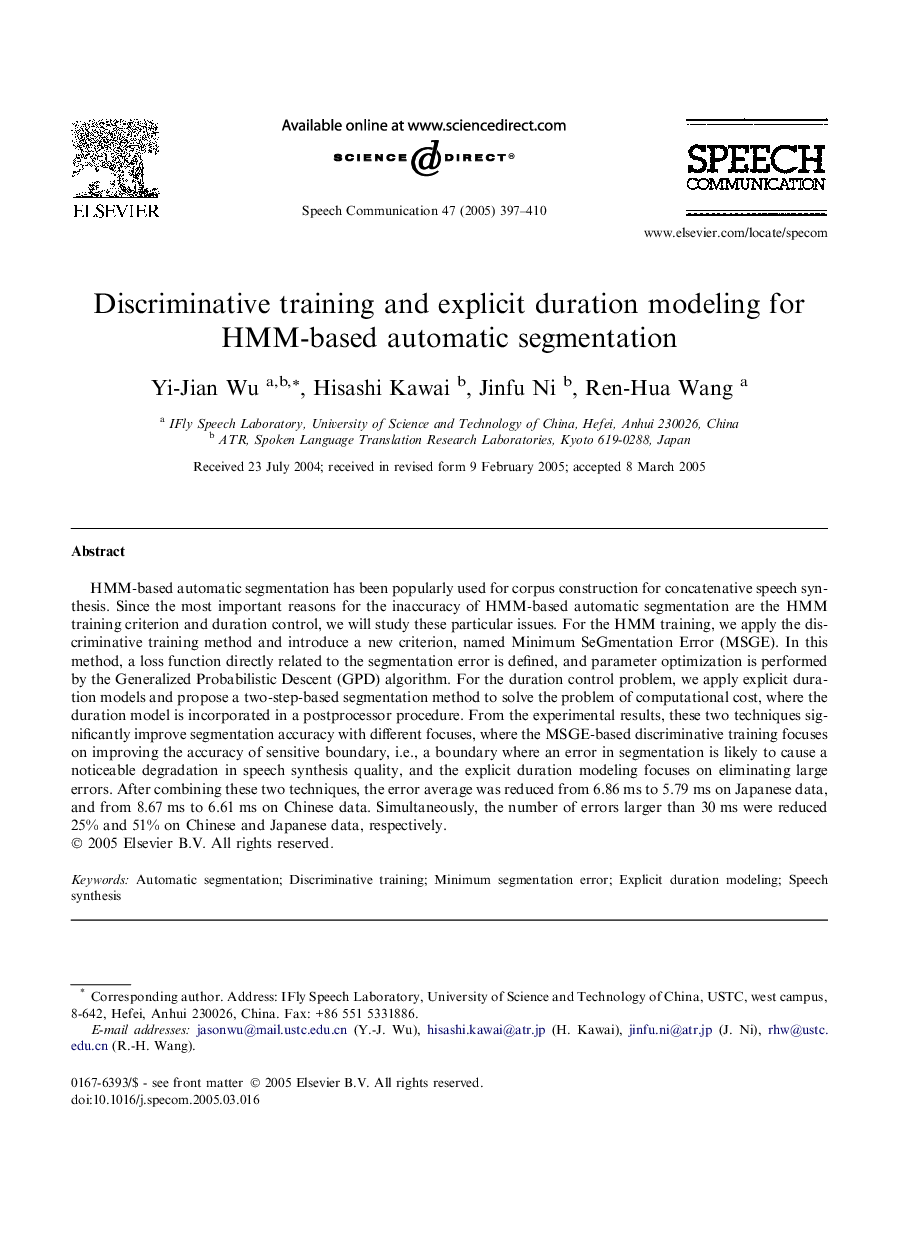| Article ID | Journal | Published Year | Pages | File Type |
|---|---|---|---|---|
| 10370829 | Speech Communication | 2005 | 14 Pages |
Abstract
HMM-based automatic segmentation has been popularly used for corpus construction for concatenative speech synthesis. Since the most important reasons for the inaccuracy of HMM-based automatic segmentation are the HMM training criterion and duration control, we will study these particular issues. For the HMM training, we apply the discriminative training method and introduce a new criterion, named Minimum SeGmentation Error (MSGE). In this method, a loss function directly related to the segmentation error is defined, and parameter optimization is performed by the Generalized Probabilistic Descent (GPD) algorithm. For the duration control problem, we apply explicit duration models and propose a two-step-based segmentation method to solve the problem of computational cost, where the duration model is incorporated in a postprocessor procedure. From the experimental results, these two techniques significantly improve segmentation accuracy with different focuses, where the MSGE-based discriminative training focuses on improving the accuracy of sensitive boundary, i.e., a boundary where an error in segmentation is likely to cause a noticeable degradation in speech synthesis quality, and the explicit duration modeling focuses on eliminating large errors. After combining these two techniques, the error average was reduced from 6.86Â ms to 5.79Â ms on Japanese data, and from 8.67Â ms to 6.61Â ms on Chinese data. Simultaneously, the number of errors larger than 30Â ms were reduced 25% and 51% on Chinese and Japanese data, respectively.
Related Topics
Physical Sciences and Engineering
Computer Science
Signal Processing
Authors
Yi-Jian Wu, Hisashi Kawai, Jinfu Ni, Ren-Hua Wang,
